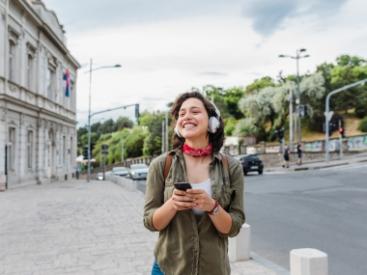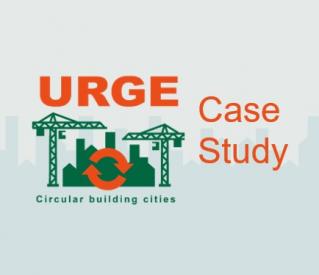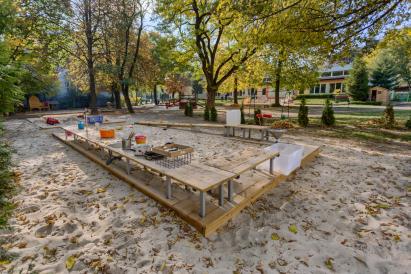-
-
-
-
Institutionalising volunteering in Pregrada
CroatiaPregradaAwakening a town’s volunteering potential
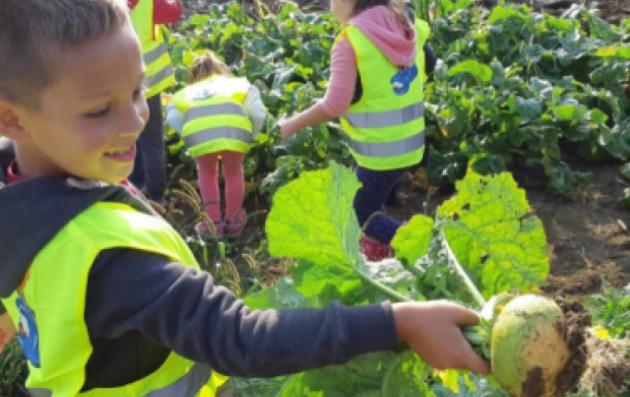 Project CoordinatorCopy linkFacebookXLinkedInEmail6 600
Project CoordinatorCopy linkFacebookXLinkedInEmail6 600Summary
Pregrada is a small town in north-western Croatia, densely populated but aging. There are many volunteers but not a city wide strategy on volunteering. The URBACT Volunteering Cities Network through the good practice of Athienou-Municipal Council of Volunteers (MCV) gives Pregrada the opportunity to institutionalize and give a frame for actions to volunteering in the city. The result is the adoption of the MCV model through a participatory strategy for addressing social problems.
Solutions offered by the good practice
Rich in architectural heritage, and with an important industrial coal plant. In more recent years, the town has seen a declining and ageing population. Even though the number of inhabitants is declining, the area of the Pregrada municipality is still the most densely populated area in the Republic of Croatia. Pregrada has many active volunteers, and close links between relevant boards and the council, but there were no local overarching groups, strategies or action plans for a formalised approach to volunteering. Meanwhile, the town did a lot of different activities with young people, but was looking for ways to encourage them — and local and regional businesses — to do more to help others in the community.
By creating a Municipal Council of Volunteering, Pregrada is in a better position to create a safer, more inclusive local environment, starting with “the little volunteers in our kindergarten, volunteering clubs in elementary and high school, the Children City Council, the Youth Council, non-institutional support of public services, town’s associations, and the local government.”
Sustainable and integrated urban approach
The practice transferred focuses on creating a governance structure to provide a common frame for action at city level. Hence the main aspect of integrated approach is of vertical and horizontal integration among departments in the municipalities, while creating a participatory process including local inhabitants. Building on the Volunteering Cities ULG, an advisory body on questions of social inclusion and solidarity will continue to support Pregrada City Council. Still aiming to involve main stakeholders in the community and local government, the board started nominating members in December 2020.
Participatory approach
A new URBACT Local Group (ULG) brought together all stakeholders relevant to volunteering and social support — from the city, civil society, schools and companies — as well as citizens of all ages. This provided strong foundations for building Pregrada’s own ‘Municipal Council of Volunteering’.
The group helped to formalise existing partnerships, involve more citizens as volunteers and to spark new ideas for common projects and cooperation. Barriers between people and sectors were replaced by a comprehension of common goals to tackle social problems in the community and a better understanding of the contributions that different stakeholders and groups can make.
“By taking part in Volunteering Cities, the Town of Pregrada heads in the direction of strengthening the participation of its citizens in decision-making processes... strengthening the inter-generational solidarity, involving the youth in creating and executing of local policies, volunteering, and involving local entrepreneurs in finding solutions for social problems in the community,” highlights Marija Marjanović, Project Coordinator.
What difference has it made
The biggest contribution of this project is founding the URBACT Local Group (ULG) in the town of Pregrada involving all the important stakeholders in the area. The ULG has contributed to strengthening cultural, social, sports, and educational aspects of life in the local community.
Transferring the practice
The experience of Volunteering Cities was not about creating a new concept of volunteering that did not exist at all within the town. Rather, it was a process of awakening, developing and harnessing the energy and disparate activities already within the community to do more and to have more impact. The ULG members grew closer through regular meetings, coordination of local activities and participation in the European-level transnational exchanges. In addition to formal meetings, members kept engaged and motivated thanks to informal coffees and dinners, carrying out project tasks between meetings.
Main ThemeIs a transfer practice1Emailmarija.marjanovic@pregrada.hrRef nid16285 -
-
Supporting strategy-creation in the field of internationalization
HungaryDebrecenData-driven local governance aiming at improving the life of internationals
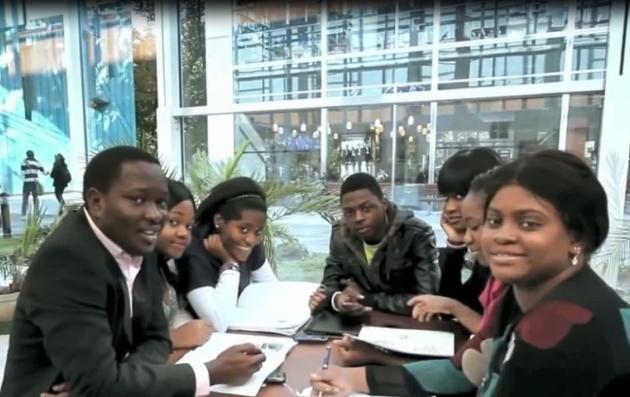 Urban development ExpertCopy linkFacebookXLinkedInEmail208 000
Urban development ExpertCopy linkFacebookXLinkedInEmail208 000Summary
In Debrecen, traditional approaches to economic development were mostly about developing infrastructure, rather than focusing on people. After moving to making data-driven decisions, via survey of needs, Debrecen has been able to develop a strategy to welcome and retain international talents.
Solutions offered by the good practice
Debrecen is the economic, cultural, and scientific centre of eastern Hungary – and the country’s second largest city. With a booming economy, the city allocates considerable resources to promoting international investment and developing local businesses. Recently Debrecen announced more than two billion euros in foreign direct investment and 8000 new workplaces.
Hosting several multinationals such as BMW, Continental and Thyssenkrupp, and one of the oldest and largest universities in the country, Debrecen has a fair amount of international talent – and employment opportunities. Several separate initiatives were available to help international professionals and students on arrival in the city and during their stay.
However, support was lacking in some areas. For example, many expatriates struggled to find suitable affordable housing, or understand key municipal information in Hungarian. Traditional approaches to economic development were mostly about developing infrastructure, rather than focusing on people.
Debrecen’s involvement in WIT was managed by the city’s economic development centre, the municipality-owned company EDC Debrecen Nonprofit Kft (EDC). To enable the municipal government to make data-driven decisions, EDC launched an initial survey to identify internationals’ needs.
Through interviews, and 450 survey answers for online questionnaires, EDC gathered perspectives on Debrecen’s safety, public transport and culture etc. The results showed that international residents appreciated the calmness, green areas, and social life, but lacked centralised information in English and international cultural events. Specific questions to international students also helped analyse potential future skills in the workforce and their match with the city’s growing number of multi-national corporations.
Sustainable and integrated urban approach
The aim is to create an environment, in which internationals find proper living conditions, that enriches the attractiveness of the city. The more international talent settles down in Debrecen, the higher the need for their integration is. Their expertise, skills and experiences help Debrecen reach a higher value-added in terms of economy, living conditions and social aspect.
This process and integrity are emphasized by the Welcoming policy of Debrecen in the framework of internationalization. This policy contributes to the development of Debrecen in the field of local business environment, tourism, education (from kindergarten till higher education) which supports the sustainable urban development.
Participatory approach
The URBACT Local Group (ULG) brought together stakeholders linked to the city’s Investment Strategy and others such as expat relocation services. This helped Debrecen to develop a new motivation to change the city’s mindset towards internationalisation – and played an important role in looking at how they could help make life easier for expats in their city.
Learning from Groningen and partner cities at WIT transnational meetings, EDC Debrecen developed a valuable peer learning approach locally, working with stakeholders individually on specific questions.
The strong stakeholder relations developed through WIT have played a key part in convincing local leaders to also focus on the social aspects of economic development. Building on this, EDC Debrecen will continue to pursue longer term goals, such as improving support for affordable accommodation, and encouraging local companies to recruit international talent.
What difference has it made
Given the linkages of the project to wider inward investment and economic development strategies, they engage with individuals on a one-to-one basis. The objective is to keep on growing the local economy and an integral to that is relationships with people, whether that be multinational companies, workers, or students.
Language was confirmed as a serious barrier for many internationals trying to settle in Debrecen. So, supported by the Vice-Mayor, the ULG and EDC Debrecen decided to develop a website in English with practical information on topics ranging from jobs and housing to cultural programs.
EDC Debrecen also identified other websites where English versions would be useful, for example on public transport, city works, the Christmas Fair, and other events. The local theatre started providing English subtitles, and other foreign languages will be introduced into the city’s cultural programme.
Transferring the practice
The long-term goal is to promote the internationalization of Debrecen, and to keep contributing to its urban and economic development. International presence in Debrecen makes our city a genuine multicultural community and enhances the achievement of the objectives we outlined in our Debrecen2030 Development Program. The city seeks to be as attractive as possible for international talent to stay and in our vision the city cannot be imagined without an international profile.
The base of the transferring journey was to change the mindset not only within our organization but among stakeholders and the municipality.
Main ThemeIs a transfer practice0Emailvamos.mariann@edc.debrecen.huRef nid16283 -
A municipal farm to supply local canteens
BulgariaTroyanPaving the way for city leadership in local food production
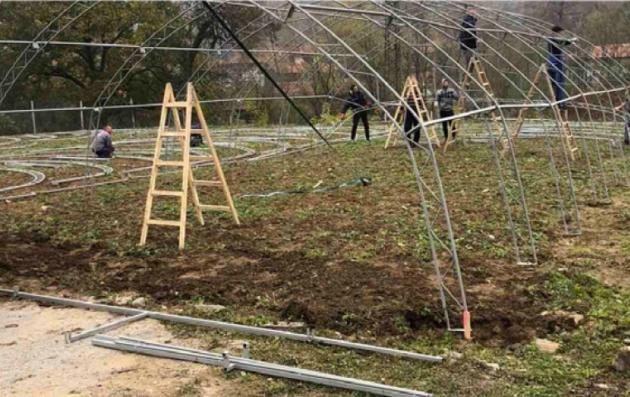 Project CoordinatorCopy linkFacebookXLinkedInEmail33 500
Project CoordinatorCopy linkFacebookXLinkedInEmail33 500Summary
Troyan developed the first municipal farm of Bulgaria, with the aim to producing food for its school canteens. During 2.5 years, it got inspired by the Good Practice of Mouans-Sartoux which enabled empowering an already on-going transformation at city local level. In the long-run, 15 ha of publicly owned land, including 200 m2 of greenhouse tunnel will produce food for the 500 children in the town’s kindergartens.
Solutions offered by the good practice
Troyan is a town in the hills of central Bulgaria known for its strong plum brandy and with strong ambitions for its agri-food sector. Its 2014-2020 Municipal Development Plan already prioritised organic farming, support for young farmers, and conservation.
Troyan aimed at delivering fresh organic products to its school canteens and started working with a research institute to plan the development of organic fruit and vegetable production – including locally-adapted plum and apple varieties. To support this, in 2018, the town announced that 15 ha of publicly owned land would be dedicated to a municipal farm, with areas for vegetables, fruit trees and cattle grazing. Troyan joined the BIOCANTEENS network to help develop an operational process to carry this out.
Troyan’s municipal farm is the first of its kind in Bulgaria. To achieve this, the town took a step-by-step approach - initially aiming to provide half of the vegetables required in local canteens, then expand production later.
In March 2019, a meeting with Rozalina Rusenova, Deputy Mayor, confirmed the new farm’s overall infrastructure: three 200 m2 greenhouse tunnels, with an irrigation system and space for a fourth tunnel; and farm building facilities including a hall, storage space, refrigeration chambers and a preparation room for end products.
Whilst the pandemic and the cold 2019 winter slowed the municipal farm’s development, good progress has been made. Local farmer Maya Genkova was recruited to run the farm – including both production and educational visits.
Organic fruit orchards and first vegetables were planted in greenhouses at the end of 2020. These are expected to supply fresh organic fruit and vegetables to all 500 children in the town’s kindergartens during the course of 2021. Activities will also be organised for children on site.
The organic certification process was also launched with the National Food Agency - an essential step before serving the food in school canteens.
Sustainable and integrated urban approach
Troyan’s approach followed the main integrating axes of the good practice it was transferring, Mouans-Sartoux:
- Horizontal integration: by supporting smart land use, organic production and local agri-food systems development, the project has a strong environmental dimension. It also has an economic dimension through the creation of 1 farmer job. From a social aspect, the activities organised on the farm will enable raising awareness of children on local organic production and healthy eating. Production is 100% organic.
- Territorial integration: the project is totally integrated in the overall strategy of the city as owned by the municipality and directly linked with school canteens provisioning.
Troyan’s transfer process benefited from a particularly positive situation: the strong political involvement of Mayor Donka Mihaylova to improve the quality of city school canteens; no major financial barriers to set the farm, the city owning a provision of suitable land in a region with good assets for agriculture; a city canteens system relying on “traditional” independent kitchens organized to prepare fresh vegetables and fruits; a good mobilization from start of stakeholders in the ULG involving Heads of all city schools and kindergartens, civil servants and representatives of parents association; last but not least, a BioCanteens’ project that raised the enthusiasm in the local stakeholders ecosystem.
Participatory approach
This process was supported by an URBACT Local Group involving heads of all city schools and kindergartens, civil servants, parents’ association, local producers and representatives of children associations. During the course of the project, 10 ULG meetings with stakeholders’ involvement were held in Troyan. The main subjects discussed during the meetings were the Municipal Farm Platform, the Kitchen Micro-good practices and the organic demand and supply.
What difference has it made
- The Municipal Farm has been made with minimum resources;
- Children are provided with fresh organic vegetables and fruits’;
- The amount of money parents pay per month for daily kids food at the kindergarten was made cheaper;
With that difference of that payment, we invest in more quality products.
Transferring the practice
Troyan has been part of the BIOCANTEENS Transfer network led by Mouans-Sartoux (France) together with other 5 European cities LAG Pays des Condruses (Belgium), Vaslui (Romania), Trikala (Greece), Rosignano Marittimo (Italy), and Torres Vedras (Portugal).
The success of Troyan is in part due to a transfer process in the framework of an URBACT network arriving at the right time to boost and implement an ongoing policy orientation toward healthy and sustainable food in the city: this is certainly a lesson learned for URBACT transfer process who best apply when empowering an already on-going transformation at city local level.
Beyond the inspiration and guidance provided by Mouans-Sartoux, one of the most valuable network activities was a network workshop on public procurement. This helped Troyan understand what it is possible to achieve with the right plans, procedures and award criteria.
The transnational meeting hosted in the city itself in July 2019 also had an important local benefit in reinforcing support for the municipality’s agri-food strategy. The involvement of the Mayor Donka Mihaylova in this meeting was key.
While work with school kitchens and on the municipal farm continues to develop, Troyan is starting to apply new ideas and perspectives on Public Procurement to improve supply to school canteens. Further next steps include an initiative to support the preparation of meals inside school canteens, and expanding the supply of local, healthy organic food to the municipality’s elderly residents.
Main ThemeIs a transfer practice0Emailpostbox@troyan.bgRef nid16282 -
Sharing stories in person and online to strengthen a suburban community
FinlandPoriCreating a place for mobilising citizens, fostering civilian power and urban stewardship through raising awareness towards the values of built heritage
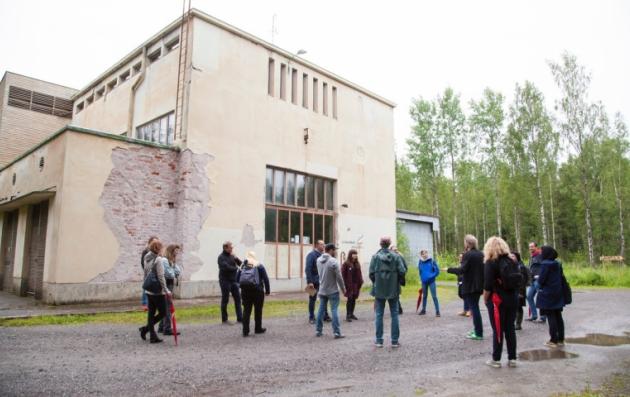 Project CoordinatorsCopy linkFacebookXLinkedInEmail84 500
Project CoordinatorsCopy linkFacebookXLinkedInEmail84 500Summary
Affecting the discourse on built environment and cultural heritage may have striking influence. Audio-visual documentation, storytelling and promotion via internet is a good way to raise awareness and bring visibility to places and people that are otherwise not under the radar of the decision makers.
Sharing stories of buildings brings about the dimension of time in living environment that helps in animating and enchanting the world and community.
Pori has applied the basic idea of the Budapest100 good practice in an innovative way (partly because of the restrictions of the COVID-19 pandemic), transforming an abandoned radio station in the eastern suburban location of the city into a Story Café which offers a cultural, creative and social space, reaching the locals and bringing them together to share stories.
Solutions offered by the good practice
Pori is an old industrial city on Finland’s West coast. The city selected an action area for the Come in! project in its eastern suburbs, which sprang up in the 1950s-1970s in proximity to a copper factory. The area is located 4km from the centre consisting of a park and the nearby residential areas, representing the main trends of post-war architecture in Finland. The park area remains unbuilt because of a shortwave radio station located in the middle, which is owned by the City of Pori and used since 2012 by a local artist community as well as an old vehicle club. With the permission of the city the artists operate the building as a creative space. In the last years, they have opened it to the public several times. Even so, there seemed to be a need for something, bringing together nearby residents, like the good practice of Budapest.
Pori has had various projects in the action area and it has offered funding numerous times to different NGOs to do projects, which resemble the Budapest100 good practice closely, there hasn’t been the level of integration and cooperation between different operators achieved, especially regarding the activating of the local population. All the elements and opportunities for adopting something like the good practice have been present but the impetus for it hasn’t manifested itself.
By 2020 the ULG felt ready to create a community festival highlighting the built environment of the neighbourhood, its character and stories, and introducing the radio station and its potential as a social and cultural space the people could claim as their own. Sadly, due to Covid, these plans had to be cancelled. Instead, a socially-distanced pop-up exhibition showcased the station's history in September 2020 and finally a two week long Story Café in May 2021 opened new spaces in the radio station for public and created a place for histories, stories and art to be shared.
As the society around came to a halt, organisers wanted a new digital approach to dealing with community and a way to highlight the built heritage. They decided to build a website for the history of the building and the local stories relating to it. Stories, photos and different kinds of historical material was crowdsourced with the help of social media, and collaboration with local radios and other media.
The local group members are committed to further develop the radio station and surrounding area into a shared space that brings people together to celebrate the built heritage and take part in active citizenship. The aim is with the development of the cultural use and the digital dimension of the radio station also to reach an audience beyond the boundaries of Pori and Finland.
Sustainable and integrated urban approach
As the city itself has become more aware of the station thanks to the community activities, an interest in its development has grown significantly. Using built heritage to draw attention to a peripheral area succeeded since the municipality started to renovate the radio station and involve the area to the city-level participatory agency project. So, the usage of built heritage helps to gain tangible and visible results that can be communicated both on site in the neighbourhood and online to wider national and international audiences. Many further local actions have been initiated by the community engagement around the area:
- The Väinölä school with over 280 pupils decided to take the area and its multidisciplinary investigation as a theme for the whole school year 2020-2021
- Raised awareness of the international architectural value of Himmeli elderly house
changed the discussion on how to treat the building during its renovation, after a lecture by architect Juhani Pallasmaa (organized by the project coordinator of Come In!) on the heritage of architects Reima and Raili Pietilä who designed Himmeli
- In the end of 2020 the city ordered a master plan for the park area from one of the leading companies in Finland designing smart cities
- Best experts of Finland and students from the Aalto University School of Art, Design and Architecture from Helsinki carried out a full professional standard historical report on the radio station in May 2021. It will be published in summer 2021 working as a guide book for treating the building as a valuable piece of Finnish, European and global cultural heritage.
Participatory approach
For the local coordinators, this building and its surrounding green area seemed like an unused connecting tissue between the suburbs – an urban green space full of history and legends to be discovered to stimulate community spirit.
They built a website to be a platform where not only the official history and unofficial stories and legends, but also the present and ideas concerning the future of the radio station can be shared
The new place means new opportunities also to integrate migrant communities which live in the surrounding suburban locations.
What difference has it made
Too early to say – the place is just now in the process of opening due to the delay caused by the pandemic.
In January 2021 over 600 square meters of new space for culture, art and social gatherings was freed from the radio station when the car club moved away. The same area is part of a new national suburban development project (2020-2022) which offers also investments in infrastructure and so gives sustainability and continuity for the efforts of Urbact.
In May 2021 the Story Café concept proved to be a success with over 750 visitors during two weeks. It demonstrated very well, that a cultural, creative and social space is a very good idea and it has to be developed as well as the overall cultural use of the building.
Transferring the practice
After being awarded the URBACT Good Practice title, Újbuda was able to create the Come In! Transfer Network to which six European cities (Gheorgheni RO, Forlì IT, Varaždin HR, Pori FI, Plasencia ES, Targówek/Warsaw PL) were invited. Equipped by URBACT with a toolkit, the cities could learn from each other. The transfer process was not one-sided, during the transnational meetings the existing practices of some of the transfer cities inspired Újbuda and contributed to the development of ideas to further improve the Good Practice.
At first sight the case of Pori is different from the original practice, insofar it uses a stable place to activate residents from surrounding areas, offering for them new cultural and leisure opportunities. On the other hand, the methods to be used to get the place accepted, are very similar to that of the Budapest100 good practice.
Main ThemeIs a transfer practice0Emailniilo.rinne@pori.fiRef nid16281 -
Experimenting with new types of grants in deprived areas which are not eligible for social funding anymore
FranceLilleFurther develop the area-based policy for deprived neighbourhoods by applying innovative elements in territorial sense, involving new types of local stakeholders and experimenting with new empowering methods
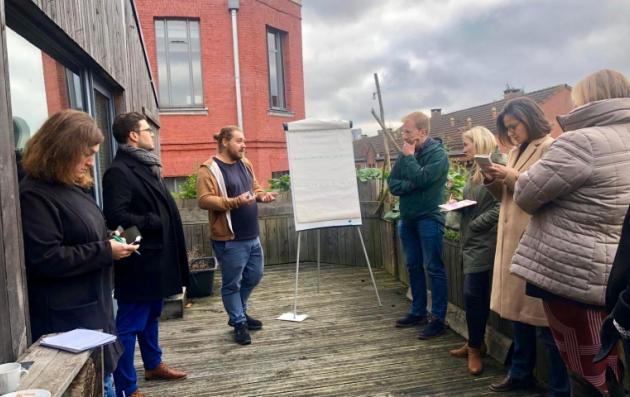 Project CoordinatorsCopy linkFacebookXLinkedInEmail1 068 000
Project CoordinatorsCopy linkFacebookXLinkedInEmail1 068 000Summary
Lille aimed to transfer the Grant element of the Lisbon good practice, improving its own system, applied in the framework of the French urban policy. The introduced innovations refer on the one hand to the territorial choice, and, on the other, on the way how the grants are applied.
Instead of the most disadvantaged priority districts, the new Lille approach focuses on some active monitoring district (former priority districts which have lost this status due to improvement of indicator values) which are isolated, far from any priority districts. Such areas, as the municipalities of Lomme and Haubourdin, experienced a cut of tax benefits from the national state and from other institutions or agencies. Thus it has proven to be difficult to maintain the dynamic without coordination and support from the municipality.
Many diagnosis showed that the usual forms of call for proposals are very competitive, almost excluding the needed cooperation of stakeholders. Lisbon’s call for proposal system requires at least two entities to respond which enhance cooperation in neighborhoods. But call for proposals might not be the best tool to that purpose as it focuses on money issues, while many initiatives need other types of support such as loan of premises or equipment, skill sponsorship… As a consequence, Lille was looking for other methods to offer institutional help to the stakeholders through design thinking.
Solutions offered by the good practice
As a former major textile manufacturing centre, despite its success in economic restructuring, the Lille area has failed to balance the ongoing decline of manufacturing employment. Inequality within Lille Metropolis is greater than in any other major French cities, except for Marseille. Wide neighbourhoods suffer from severe long-term unemployment, urban decay, population decline, poor health conditions and welfare dependency.
Lille Metropole’s existing grant system is framed by the national urban policy, implemented through “City contracts”. Based on political decisions for six years at inter-municipality scale, the city contract is implemented through annual calls for proposals. Non-profit organizations, such as public institutions and NGOs, are invited to submit proposals for projects concerning the identified priorities.
Sustainable and integrated urban approach
French urban policy is area-based. The priority districts are defined by the national state on the basis of inhabitants’ low-income criteria (concentration of populations having resources lower than 60% of the national median reference income). There are 21 priority districts in the Metropole gathering 18% of the Metropole population. It’s the largest proportion among France’s big cities.
Furthermore, 20 areas in Lille Metropole are active monitoring districts which do not fit with the new priority districts’ criteria (the low-income rate or the concentration of population) anymore and are part of a less subsidized transition phase. Active monitoring neighbourhoods are no longer eligible for tax benefits and specific aids owed to priority districts. For example they are not qualified for national aids of the urban policy annual call for proposal.
Lille decided to focus on active monitoring districts which are isolated, far from any priority districts – in such areas it is difficult to maintain the dynamic without coordination and support from the municipality. As pilot the municipalities of Lomme and Haubourdin have been selected.
Participatory approach
Participation has always been one of the pillars of the “politique de la ville” policy. It is identified as one of the main conditions to secure the implementation of the city contract. It is a major challenge for Lille Metropole to increase the interest for civic participation, community life and endogenous development.
What difference has it made
The main ambition of Lille Metropole was to transfer the Grant system element of the Lisbon Good Practice. A new experimental Grant (Call for project) was aimed for, based on the Lisbon experience, finding new stakeholders to be involved, mobilizing more private investments in the priority neighbourhoods and to share new social innovation experiences. Lisbon’s good practice is seen as an inspiration to improve the Lille local grant system on the following points:
- Encourage cooperation between a various range of stakeholders in the neighbourhood (requiring responses by at least 2 different organizations)
- Attract new partners in the neighbourhoods, to draw more partners from the private sector, groups of inhabitants, other NGO’s…
- Promote a more participatory development, by enabling informal groups of inhabitants to participate in the projects
- Foster projects that can reach financial sustainability
Lille Metropole was chosen to be the World Design Capital in 2020, allowing for a year-long city promotion programme to showcase the accomplishments of cities that are effectively leveraging design to improve the lives of their citizens. Within this framework a labelled design service contractor could be involved as URBACT expertise.
In the course of work it became clear that the traditional system of ‘call for proposals’ has to be modified. To enhance the cooperation of the stakeholders the innovation of Lisbon’s call for proposal is applied (at least two entities have to respond which enhances cooperation in neighbourhoods). In order to strengthen qualitative elements, need for other types of support than money, such as loan of premises or equipment, skill sponsorship, other methods are experimented to offer institutional help to the stakeholders through design thinking.
Instead of simple call for proposals the question is raised: what does your area need? A kind of project factory is organized (the intervention of Francois Jegou), through organizing local workshops, listening to people’s ideas.
Recently the workshops are going on. ComUnityLab gave a starting point, now a new dynamics has been created which will last for 2 more years. Then the method will be distributed to other areas of MEL with precise conditions, how many organizations have to be included.
Transferring the practice
Lille was one of the seven European cities (besides Bari Italy, Aalborg Denmark, Sofia Bulgaria, Ostrava Czech Republic, Lublin Poland, The Hague Netherlands) of the Com.Unity.Lab Transfer Network, led by Lisbon, to transfer the URBACT Good Practice of Lisbon on the integrated toolbox for deprived neighbourhoods.
Equipped by URBACT with a toolkit, the cities could learn from the good practice and also from each other.
Main ThemeIs a transfer practice0Emaillretournard@lillemetropole.frRef nid16280 -
Creation of a new NGO platform
SloveniaIdrijaThe new ‘Towns’ Living Room’, established by the municipality in a vacant building, involves the heads of the city administration, active citizens, social services, development agency, public library and nursing home, local clubs and various associations
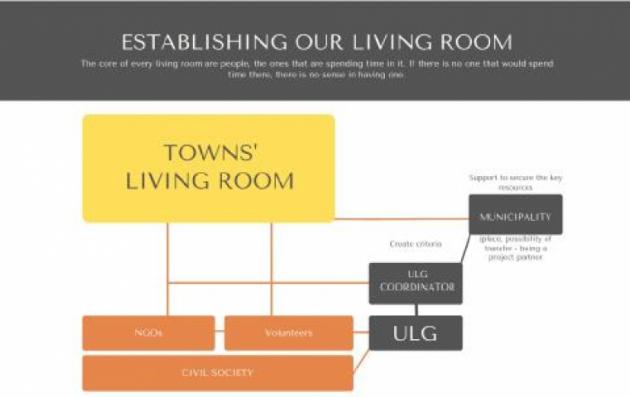 Project CoordinatorCopy linkFacebookXLinkedInEmail11 800
Project CoordinatorCopy linkFacebookXLinkedInEmail11 800Solutions offered by the good practice
Fostering the engagement of inhabitants who are not in paid employment but have access to skills and resources to help support those in need, builds the capacity of civil society to engage with often complex social problems in a structured way. Altena founded its NGO platform in 2008 and called it Stellwerk. The Stellwerk started without a budget. The municipality made available premises, paid the energy and cleaning bills, provided a minimum of administrative resources. Currently the Stellwerk has 8 volunteer workers who co-ordinate several hundred volunteers providing disability support, arts and music groups, home visiting and home care services, refugee integration and much more. The Stellwerk provides an essential channel of communication between civil society and municipality.
In February 2020, Idrija launched its new ‘Towns’ Living Room’: the municipality offered a vacant building to house a small ULG involving the heads of the city administration, active citizens, social services, development agency, public library and nursing home, local clubs and various associations.
The ‘Towns’ Living Room’ links organisations with interested citizens if needed, but it is a “by the people for the people’’ model. Activities have already included events on housing and building refurbishment, chess classes, evening of poetry, book presentation, reading of fairy tales for children, knitting evening to raise breast cancer awareness and many more. It hosts services, such as a municipality supported volunteer based free transport service for elderly people and a book corner provided by the local library.
Sustainable and integrated urban approach
For successful transfer of good practice, it connected and established cooperation across different departments of a municipality. As well as also it strengthened the connection between local actors, NGOs and municipality.
With the practice based on ‘people to people’ approach it also improves the quality of design and implementation of smaller local actions.
Good practice works when there is trust established between all different parties – municipality, NGOs/volunteers, institutions and citizens.
Participatory approach
The practice is based on people, NGOs, volunteers that are encouraged by ULG. The coordination between all the elements was done by ULG coordinator. It includes all important stakeholders and interested citizens which is essential part of success of a practice based on ‘’people to people’’ approach. It uses bottom-up approach which leads to that people actually want to be part of good practice and want to give to community because they are having opportunity to fulfil their wishes and they actually have a say in what will happen.
What difference has it made
After official opening of the premises of the NGO platform (the "Towns living room’’) volunteers started to turn up. Ideas are coming in all the time which means that people are actually engaging and doing things on their own. There is also a wide acceptance now in public. At the start there were a lot of opinions about "just another project’’ and now those opinions are different and more in a way "we really needed that’’ "it is nice to have a place where we can do something’’. A lot of ideas are already on the list to do, and everyone is more confident now. With less Covid-19 restrictions the "Town living room" was able to open up again which resulted in a rich monthly program with different activities organized as well as giving people a place to hang out a bit without organized activities.
Transferring the practice
Idrija was one of the seven European cities (besides Manresa Spain, Igoumenitsa Greece, Isernia Italy, Melgaço Portugal, Aluksne Latvia, Nyírbátor Hungary) of the Re-grow City Transfer Network, led by Altena, Germany, to transfer the URBACT Good Practice of Altena on finding opportunities in declining cities. Some of the cities were transferring the NGO platform while others the Pop-up shops.
This good practice has also been chosen as one of 5 URBACT National Practice Transfer Initiatives (NPTI) and will be transferred to 6 other Slovenian municipalities. The project is led by Slovenian NUP, with Tina Lisac as national expert.
Equipped by URBACT with a toolkit, the cities could learn from the good practice and also from each other.
Re-grow City deliberately focused on small and medium sized towns, because they face distinctive challenges in terms of constrained resources and limited technical capabilities when compared to larger cities. These constraints offer opportunities, however, for example robust social networks with high levels of ‘social capital’ and short decision making routes that speed up the adoption of untested or controversial methods. Taken together with the resources and skills local people have, shrinking cities are places of opportunity and can demonstrate considerable resilience even where they face severe constraints.
As a side-outcome of the Re-Grow City network, in May 2021 the new pan-European network ReGrow Towns has been established. This is aimed for towns below the size of 50 th residents and is an addendum to the already existing networks of Eurocities (cities above 250 th residents) and Eurotowns (cities between 50-250 th residents).
Main ThemeIs a transfer practice0Emailtina.lisac@icra.siRef nid16279

